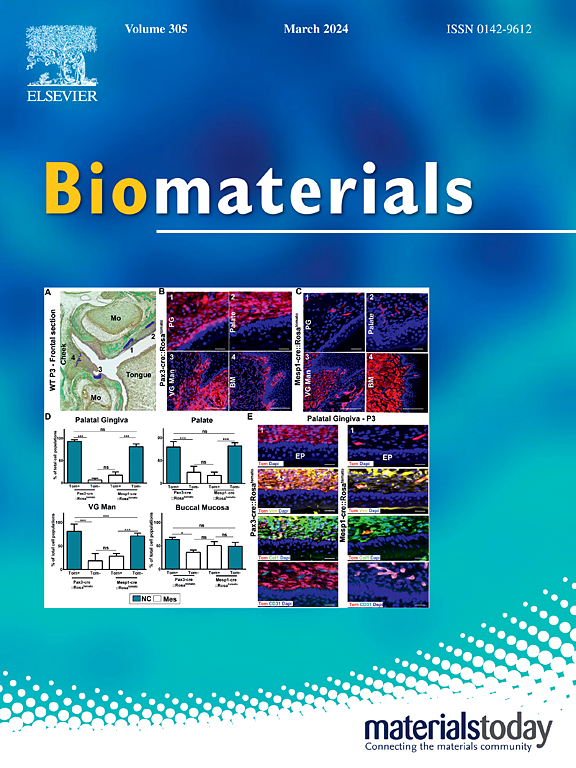Chiral nanoassembly remodels tumor microenvironment through non-oxygen-dependent depletion lactate for effective photodynamic immunotherapy
IF 12.8
1区 医学
Q1 ENGINEERING, BIOMEDICAL
引用次数: 0
Abstract
Targeting lactate metabolism in tumor microenvironment (TME) has emerged as a promising strategy for enhancing immunotherapy. However, the commonly used strategy of lactate oxidation by lactate oxidase consumes oxygen, exacerbating tumor hypoxia and hindering immunotherapy. Here, we present a novel tumor-targeting, near infrared light-activated and TME-responsive chiral nanoassembly (Zn-UCMB) for enhancing photodynamic triggered immunogenic cell death (ICD) through a nonoxygen-dependent depletion of lactate. In the moderately acidic TME, the chiral Zn complex liberated from the Zn-UCMB selectively coordinates with l-lactate, leading to the depletion of lactate. Additionally, the Zn-UCMB facilitates the decomposition of H2O2 into O2, which significantly enhances the efficacy of photodynamic therapy (PDT) and triggers a robust ICD effect. Moreover, the nonoxygen-dependent depletion of lactate can reprogram the TME by reducing the expression of HIF-1α, decreasing VEGF expression, and mitigating immunosuppressive conditions. This prompts the phenotypic transformation of tumor-associated macrophages from M2 to M1. Consequently, Zn-UCMB not only enhances the efficacy of PDT but also elicits a potent ICD during 980 nm laser irradiation, thereby effectively suppressing tumor growth and metastasis. The findings offer a novel approach to overcome the limitations of existing lactate metabolism-targeting strategies and provide a promising therapeutic option for enhancing the efficacy of immunotherapy.

求助全文
约1分钟内获得全文
求助全文
来源期刊

Biomaterials
工程技术-材料科学:生物材料
CiteScore
26.00
自引率
2.90%
发文量
565
审稿时长
46 days
期刊介绍:
Biomaterials is an international journal covering the science and clinical application of biomaterials. A biomaterial is now defined as a substance that has been engineered to take a form which, alone or as part of a complex system, is used to direct, by control of interactions with components of living systems, the course of any therapeutic or diagnostic procedure. It is the aim of the journal to provide a peer-reviewed forum for the publication of original papers and authoritative review and opinion papers dealing with the most important issues facing the use of biomaterials in clinical practice. The scope of the journal covers the wide range of physical, biological and chemical sciences that underpin the design of biomaterials and the clinical disciplines in which they are used. These sciences include polymer synthesis and characterization, drug and gene vector design, the biology of the host response, immunology and toxicology and self assembly at the nanoscale. Clinical applications include the therapies of medical technology and regenerative medicine in all clinical disciplines, and diagnostic systems that reply on innovative contrast and sensing agents. The journal is relevant to areas such as cancer diagnosis and therapy, implantable devices, drug delivery systems, gene vectors, bionanotechnology and tissue engineering.
 求助内容:
求助内容: 应助结果提醒方式:
应助结果提醒方式:


